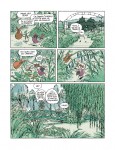 Here's the second part of our annual creator survey, and this time out we have some exclusive peeks at some new projects for 2016, as well as what might be hit of something cool to happen...but you'll have to read everything figure out what that is.
Thanks to all for taking the time to participate in this survey especially during the busy holiday time. You can find Part 1 here.
Here's the second part of our annual creator survey, and this time out we have some exclusive peeks at some new projects for 2016, as well as what might be hit of something cool to happen...but you'll have to read everything figure out what that is.
Thanks to all for taking the time to participate in this survey especially during the busy holiday time. You can find Part 1 here.
Viewing: Blog Posts Tagged with: james romberger, Most Recent at Top [Help]
Results 1 - 5 of 5
Blog: PW -The Beat (Login to Add to MyJacketFlap)
JacketFlap tags: james romberger, derf, Shaenon K. Garrity, neil kleid, steve morris, thomas ragon, 2016 creator survey, gnzeer, claire bretecher, jimmie palmiotti, kickliy, News, Cartoonists, Tom Kaczynski, james sturm, Jimmie Robinson, Add a tag
Blog: PW -The Beat (Login to Add to MyJacketFlap)
JacketFlap tags: james romberger, Simone Castaldi, IDW, dean mullaney, Top News, Hugo Pratt, Corto Maltese, Add a tag
Under the Sign of Capricorn by Hugo Pratt
IDW/Eurocomics, $29.99
_________________________________________________
As the year turns, IDW’s EuroComics imprint debuts with the first of twelve projected volumes of Hugo Pratt’s beloved Corto Maltese. For these elegantly produced trade paperbacks, Pratt’s literate, witty, exceedingly well-researched and beautifully drawn stories are translated by Simone Castaldi of Hofstra University and Dean Mullaney, producer/co-editor of IDW’s essential Milton Caniff collections and their Eisner award-winning Alex Toth biographical trilogy. Pratt’s Corto Maltese is among the most highly regarded series in European fiction, but American publications done by NBM in the 1980s and by Rizzoli in 2012 had production problems and they found lukewarm receptions. Finally, Mullaney and IDW do Pratt justice with this new series.
Hugo Pratt was born in 1927, of Italian, English, Jewish and Turkish heritage. In 1936 his father, a Mussolini supporter, moved his family to Africa, where at the age of 14 young Hugo was conscripted into the colonial police. The now-multilingual youth became entranced by Caniff’s comic strip Terry and the Pirates and writers like Joseph Conrad, Jack London and Robert Louis Stevenson. After his father’s death in a British POW camp in East Africa in 1942, Pratt and his mother returned to Venice, where he studied at the military college Città di Castello and interpreted for the allied army. In 1949 he moved to South America where he collaborated with the late writer Héctor Oesterheld on El Sergeanto Kirk, Ernie Pike and Ticoderoga and he created Fort Wheeling, Anna della Jungla and other well-known titles.
His most famous creation Corto Maltese was first seen in “The Ballad of the Salty Sea” in the Sgt. Kirk title, then after he returned to Italy in the early 1960s, the series debuted in earnest in the French magazine Pif in 1970 and made Pratt famous; it has been translated into more than fifteen languages and is still a best-seller in Europe. Concurrent with Corto, Pratt also created many other series, such as Scorpions of the Desert and Morgan. He wrote Indian Summer (1983) and Gaucho (1991) for artist Milo Manara and he also wrote prose novels such as Jesuit Joe (1980). Pratt is the recipient of many honors worldwide including a French knighthood; in America he was inducted into the Eisner Hall of Fame in 2005. Pratt died of cancer in Switzerland in 1995.
I interviewed Dean Mullaney and Simone Castaldi by email in December 2014.
_______________________________________________________
James: It is hard to overemphasize how significant I believe this project to be; Hugo Pratt is simply one of the greatest cartoonists to ever walk the Earth.
Dean: We’re all in agreement here! I first tried getting the rights in 1982, hoping to serialize the short stories in Eclipse! You live long enough…dreams sometimes do come true.
James: Pratt and Corto Maltese have been huge in Europe for many years, but are unknown here. How will IDW promote such an important series?
Dean: Introducing Hugo Pratt to an American audience presents its challenges but we are wholly dedicated to making it a success. I personally consider this one of the most important projects I’ve ever edited. Corto Maltese is the lead feature in IDW’s winter catalogue. The promotional budget for the series is easily the highest of any of our previous books. In the U.S. Hugo Pratt and Corto Maltese are primarily known by professional comics writers and artists, who have eagerly “enlisted” in spreading the word to their fans. With Patrizia Zanotti, Pratt’s longtime assistant, we are putting together a Pratt presentation at the Society of Illustrators in cooperation with the French Embassy. And Corto benefits as the premiere title in our new EuroComics imprint.
James: “Under the Sign of Capricorn” contains all of the stories that were in NBM’s The Brazilian Eagle and two of the pieces are from Banana Conga. Will forthcoming volumes include a lot of material never published in English before?
Dean: Although Pratt’s 20-page Corto stories have been published in several formats and in seemingly arbitrary configurations such as “Banana Conga,” he envisioned them as belonging to four distinct cycles. We are publishing these stories in four collections according to Pratt’s overall design and will complete the entire series in twelve volumes.
James: Your initial offering is actually the third book in the series. Will there be hardcover editions forthcoming at some point?
Dean: We’re beginning with the third book because the poorly-received Rizzoli edition of “The Ballad of the Salt [sic] Sea” (chronologically the second book in the series) is still in print. We’ll cycle through the rest of the books, and then double-back to present “The Early Years” and “The Ballad of the Salty Sea.” “Under the Sign of Capricorn” is a good place to start because it’s with these inter-related short stories from the early 1970s that Pratt established most of his primary themes and characters.
We will also issue six oversized (close to the dimensions of Pratt’s original artwork), limited edition hardcovers, each containing the contents of two trade paperbacks. For example, the first hardcover will collect, for the first time anywhere, the entire “Caribbean Suite” (the first eleven short stories) in a single volume—something Pratt had always wanted to see. These hardcovers will include many “extras” — essays, artwork, and photographs that provide background on the stories and Pratt’s intensive historical research. The covers of the hardcovers will feature Pratt’s watercolors.
James: Yours is a beautiful packaging, done at a much more appropriate, larger scale than the NBM versions from the 1980s and the small color book done by Rizzoli a few years ago. To be fair, the earlier US editions were well-intended, I think. NBM’s efforts were the first and they are long out-of-print. The worst aspect of them was their very lackluster covers. Rizzoli’s book was actually done with the cooperation of Patrizia Zanotti, who did the color with Pratt’s blessing; the main detriments were the scale, the odd font lettering and some pixelation of the art. Now, IDW’s excellent reproduction is a clear improvement. Did you have access to stats, or scans of the original art?
Dean: Because Corto has been published around the world in various formats and sizes, both B&W and color, the digital files are of varying quality. I rejected the first set we received from Europe. Some of the artwork was blown-out, details were missing, etc.. They were a disservice to the cartoonist. Oddly, these were the identical files used by NBM in the 1980s. I’ve been wanting to edit a definitive edition of Corto Maltese for too many years to settle for sub-par reproduction. The Italian files we have for translation were made from pristine sources and we requested nothing less.
All stories will be published in B&W. I specifically chose a heavyweight matte stock with a slight sheen that would give the book substance and hold the ink well, providing crisp, sharp blacks, which is essential to doing justice to Pratt’s art. Like Milton Caniff and Alex Toth, Pratt was a master at spotting blacks. It’s one of the factors that, I believe, makes his art seem better in B&W. What’s also fascinating about Pratt is that unlike most cartoonists who develop a style early in their careers and run with for decades in often-deteriorating exactness, he (again like Toth) improved with age. Pratt stripped his storytelling down to the minimum elements necessary to tell his story effectively and with impact. There are certain panels that make you just shake your head, wondering how he decided to place his characters that specific way within the frame. An example comes to mind in “So Much for Gentlemen of Fortune,” in which he focuses a slight downshot on Corto and Ambiguity as they step on the gangway to Rasputin’s ship. I don’t think I’ve ever seen that angle in any other comic. And then there are memorable panels like the straight-on close-up of Sureshot peering through a window in “Sureshot Samba.” As both writer and artist Pratt creates images that stay with us forever.
James: Will any of the future books be in color?
Dean: Will we eventually publish them in color? Perhaps, but at first, it’s essential that we present Pratt’s artwork the way he originally intended.
James: [Update, Feb. 2015: I generally prefer Pratt in black and white, but an exception can be seen in a book I just got in Paris, Casterman’s 2015 facsimile of the original Italian 1977 Milano Libri edition of Corto Maltese en Siberie. This book boasts some gorgeous color done by Pratt’s partner of the time, Anne Frognier, which is printed in the ben-day dots of American Sunday newspaper strips and comic books. The dots are described in a booklet that is included with the volume as the “ancestor of the pixel”; this look is explicitly referenced in the story as Corto reads a newspaper with a Geo. Herriman “Krazy Kat” strip and one must also think that Caniff was homaging his greatest influence, Caniff.] I have not read the originals, but can you tell me what is involved in translating a work with such specificity of international and historical significance?
Simone: I do a first basic, literal translation indicating all idiomatic instances and uses that are proper to the Italian language and suggest possible ways to adapt them into English. This way Dean has a good starting point to smooth everything out in a coherent and uniform style. Then Dean and I compare solutions and make sure that the literal meaning and stylistic flavor is preserved. The challenge we face is that of rendering the peculiarities of Pratt’s style and the laconic “hard boiled” dialogue in Pratt’s stories. Corto is part a Stevensonian and part a Chandlerian character. However, his sarcasm and elliptical rhetoric have both literary and specific regional roots. As a Venetian, Pratt has absorbed the traditional quick and stinging humor of the Venetian people. Corto, although he doesn’t speak the dialect of Pratt’s hometown, is inherently Venetian.
Dean: It’s not our place to show the reader how clever we can be. My job is to make you believe that you are reading Hugo Pratt’s dialogue in English. If I can capture the cadence and rhythm of Pratt’s narrative, then our translation is a success. It was imperative that we went back to Pratt’s original Italian scripts. Previous English editions were translated second-hand from French. It’s like the old game of telephone — the original message changes with each retelling until eventually the meaning completely veers off course. That Pratt was an inveterate researcher adds an additional layer of complexity to the translation; we need to embrace the breadth of his research in order to interpret it into English. Further, Pratt makes liberal use of literary allusions. I spent a half hour on a single panel that made no sense in the literal Italian or translated French, until I realized that he was making an oblique reference to Malraux’s “The Voices of Silence.” Patrizia has been helpful in some of these instances because she recalls discussions with Hugo Pratt about his influences.
James: I usually dislike digital lettering, but the font used here, derived from Caniff’s illuminator Frank Engli, seems to be the best possible choice in that regard.
Dean: I created a digital font of Frank Engli’s lettering because reading “Terry and the Pirates” was what made Pratt want to become a cartoonist in the first place. Patrizia Zanotti agreed that Pratt would have been thrilled to have Frank Engli letter his work!
James: Pratt’s collaborations with the late writer Héctor Oesterheld are among the most significant European comics to never reach our shores. Do you plan to translate them?
Dean: I would love to eventually edit a larger library of Hugo Pratt’s work, but first things first — we need to make Corto a success on this side of the Atlantic.
James: Can you speak a little about the uniqueness of Pratt’s content in comics, for instance his critique of capitalism/imperialism? He certainly retains a powerful sense of adventure and romanticism, but at the same time deglamorizes how the western world subjugates various cultures.
Simone: Pratt’s early works like “Asso di Picche” appeared in the immediate post-war years in Italy. The Corto Maltese stories hit the Italian, and European, scene in the late sixties—after Pratt’s return from Argentina—and become very popular with the ’68 generation of student protesters and left-wing activists. This happened almost by chance as Pratt clearly belongs to an older generation, that of the pre-economic boom Italy of the ’50s. Nonetheless, incidentally, Corto reflected some of the stances of the ’68 youth and it even predated the anti-ideological movements of ’77. Although Pratt’s personal political positions became a bit more conservative later in his life, Corto’s individualism, his refusal of country, family, even personal gain, made him an ideal hero for the times. Moreover, not only can his Caribbean saga be read as the first post-colonialist stance in the comic medium, but Pratt’s demystification of WWI (especially Italy’s role in it) and the dismantling of the patriotic rhetoric tied to it are of great significance in the largely conservative Italy of the times.
Dean: I think it’s also instructive to place Pratt’s Corto stories in context of what was happening in mainstream American comics at the time. For example, in 1967 when Pratt started “The Ballad of the Salty Sea,” even the best of Stan Lee, Jack Kirby, Steve Ditko, et al was aimed at a juvenile audience. Pratt, on the other hand, was an adult writing about mature themes in a nuanced manner for a sophisticated audience. We didn’t see anything in American comics approaching Pratt’s take on colonialism and the plight of indigenous people, for example, until Don McGregor “Panther’s Rage” in 1973, and even that remained an anomaly, whereas Pratt continued to develop his themes in Corto.
It must be remembered that Hugo Pratt’s comics reflect his own peripatetic experiences. He came by a humanist outlook honestly — from his youth in Ethiopia to his many years in Argentina. That his stories resonated with a late ’60s and early ’70s audience — and still resonate with us today — is because he writes of the universal struggle for human dignity, and did so in the context of a classic adventure narrative.
James: What’s next for the EuroComics imprint?
Dean: For our next series we will turn to the Iberian peninsula and what many consider the most important graphic memoir comics to have ever been published in Europe—“Paracuellos,” Carlos Giménez’s poignant stories of being forced to grow up, along with thousands of other “children of the defeated,” in church-run “orphanages” in Franco’s fascist Spain. Will Eisner says, “Carlos Giménez speaks with humor and sensitivity to the human condition. His work is international.”
________________________________________________
(A heavily edited excerpt of this interview ran in Publishers Weekly Comics World)
Blog: PW -The Beat (Login to Add to MyJacketFlap)
JacketFlap tags: News, josh elder, adam koford, Becky Cloonan, chris roberson, Jimmy Palmiotti, Alex Segura, Tom Hart, Top News, charles forsman, Greg Pak, Year-End Survey, Allison Baker, james romberger, Richard Starkings, annual survey, jt yost, Add a tag
And so we wrap up this year’s with the last round of replies, and if one thing is clear it’s that a lot of people are looking forward to a new Star Wars movie. Once again, thanks to everyone who took the time from their busy schedules to respond. Previous parts can be read here: Part One, Part Two, Part Three, Part Four.
 Greg Pak, writer
Greg Pak, writer
2015 Projects: ACTION COMICS, BATMAN/SUPERMAN, STORM, and my new online store,gregpakshop.com, where you can buy signed copies of my books!
What was the biggest story in comics in 2014? Diversity. After the success of MS. MARVEL, there’s no going back. We’re going to continue seeing more and more diversity of casts and genres and art styles in mainstream and independent comics, and that’s a fantastic thing that’s healthy for the entire industry in every way.
What will be the biggest story in comics in 2015? Diversity. Not just among casts, genre, and art style, but among actual creators. I think there was a time not too long ago when I was the only person of color writing for the big two. That’s going to change. And we’re going to see more and more women writing and drawing, and comics will continue to tap into new audiences as a result, which will be better for the entire industry.
What guilty pleasure (of any kind) are you looking forward to in 2015? I got one of those fancy blenders, and it’s gonna be fruit smoothies 24/7, y’all.
 Richard Starkings, writer/lettering guru
Richard Starkings, writer/lettering guru
2015 Projects: ELEPHANTMEN — 60 issues and still counting! THE BEEF with Tyler Shainline and Shaky Kane! This years comicbookfonts.com New Year’s Day sale… we’ve been posting Lettering Q&A videos everyday on the Comicraft YOUTUBE channel
What was the biggest story in comics in 2014? GUARDIANS OF THE GALAXY becoming such a huge hit.
What will be the biggest story in comics in 2015? Probably STAR WARS comics, toys and the movie!
What guilty pleasure (of any kind) are you looking forward to in 2015? THOUGHT BUBBLE 2015. Best comic festival IN THE GALAXY!
JIMMY PALMIOTTI
2015 Projects: Harley Quinn, The Con Job, Abbadon, G.I.Zombie.
What was the biggest story in comics in 2014?
I think getting more women in the business and hearing from different voices with many different ethnic backgrounds as well as mainstream comics becoming more global. With this, I hope we get to a place where we look at the work with a better eye and less about the person that created it. I am hoping traditional superheroes mature a bit in the process.
What will be the biggest story in comics in 2015?
Hopefully it will be the direction of certain creators getting behind their own creations and the audiences out there supporting them. I also think IMAGE comics will finally beat out one of the big two companies and cause them to rethink they way they share profits and creator owned ideas.
What guilty pleasure (of any kind) are you looking forward to in 2015? For me, the guilty pleasure I am now enjoying is moving a lot of what I do out of my house and into a studio surrounding and making our Paperfilms website the place to find my own future projects. That, and a couple of movies on my radar that are not franchises or part 30 of something that has already been beaten to death.
J.T. Yost, publisher/creator
2015 Projects: As a publisher (Birdcage Bottom Books):
- A collection of short stories by Dakota McFadzean (probably a risograph printing)
- “LOUD COMIX #5″ by Jamie Vayda (featuring stories written by various southern punk-rock musicians and other riff-raff)
- “On The Other Hand” anthology (comics drawn using the artist’s non-dominant hand)
- “Bottoms Up!” anthology (stories of hitting rock-bottom and recovery)
As a distributor:
Birdcage Bottom Books continues to expand its roster of indie-comic artists and micro-press publishers with a focus on limited-edition hand-made mini comics. Our mission is to make comics without barcodes easier to find and own while allowing comic artists to focus more time on creating and less on marketing & promotion.
As an artist:
Finishing up several short comics for various anthologies (including “Not My Small Diary #18 (pets)”) and hopefully working on finishing the final issue of my “Losers Weepers” series.
What was the biggest story in comics in 2014? I don’t know that it’s the biggest story, but I found it interesting that several of the larger indie-comics publishers (Fantagraphics, Last Gasp, Sparkplug, etc.) have turned to Kickstarter to help fund their publishing endeavors.
My own publishing company has used it for two anthologies (“Digestate: a food & eating themed anthology” and “Cringe: an anthology of embarrassment”) with great success. Kickstarter is a great way to reach a broader audience and offer additional incentives to “pre-order” a book.
What will be the biggest story in comics in 2015? The success or failure of The Peanuts movie will probably make some headlines.
What guilty pleasure (of any kind) are you looking forward to in 2015? Visiting one of the “cat cafés” opening in NYC this year. My cats died a few years ago, and my wife is allergic (plus we have a chihuahua who hates cats). I actually don’t feel guilty about this at all, but there are some who would insist that I should be.
Josh Elder, writer and Comics Ambassador for the US State Department (Yes, that’s really a thing.)
2015 Projects: The trade paperback for Scribblenauts Unmasked by myself, Adam Archer, Ian Hering and Saida Temofonte (with edits by Alex Antone) drops in February from the fine folks at DC Comics. I’ve got a couple additional unannounced projects from DC on the docket in 2015, the relaunch of my Mail Oder Ninja series from Andrews McMeel Publishing and about a half-dozen personal projects that have been long in the works. I’m also continuing in my role as Executive Director of Reading With Pictures and Comics Ambassador for the US State Department to promote the use of comics in the classroom all around the world.
What was the biggest story in comics in 2014? Amazon’s acquisition of comiXology. The world’s biggest and most influential e-retailer just bet big on comics. ComiXology itself is obviously the big winner here, but the Amazon acquisition is a clear sign that the big boys of digital content distribution think that comics could well be the next big thing. And that is very exciting indeed.
What will be the biggest story in comics in 2015? I know of a certain something that, should it come to pass, would be a major contender for the top spot (How’s that for a tease?), but since I cannot yet speak of such matters, I’ll instead go with all the ch-ch-changes at DC Comics due to the Great Western Migration. Jobs will live, jobs will die and nothing will ever be the same again!
What guilty pleasure (of any kind) are you looking forward to in 2015? Against all reason and better judgment, I am getting crazy excited for Star Wars. The movie, the comics, even that kooky, cross-guard lightsaber. I’ve been burned so many times before, yet I still think I’ll be waiting in line opening night to return to a galaxy far, far away…
2015 Projects: Revenger
What was the biggest story in comics in 2014? Conversation of gender around comics.
Guilty Pleasure: New Star Wars!
2015 Projects: The Late Child and Other Animals with Marguerite Van Cook, a graphic novel just out from Fantagraphics Books; plus I am currently working on the second issue of Post York for Uncivilized Books and also finishing my critical book about Jim Steranko.
What was the biggest story in comics in 2014? The Jack Kirby estate’s settlement with Marvel Comics/Disney that ensures Kirby’s creative credit and gives the family substantial financial compensation.
What will be the biggest story in comics in 2015? I’d like to think it would be an epiphany in America regarding the superior quality of Hugo Pratt’s work, due to IDW/EuroComics’ new Corto Maltese reprint series.
What guilty pleasure (of any kind) are you looking forward to in 2015? Now having the option to read a Marvel Comic or watch a Marvel movie without feeling like I am helping a corporation rip the Kirbys off.
Allison Baker & Chris Roberson
2015 Projects: Chris is busy scripting funny books like ALIENS and DOC SAVAGE (and a whole list of other projects he can’t talk about yet), while Allison is the Director of Operations for IDW.
What was the biggest story in comics in 2014? Our perspective is a little skewed because of personal involvement, perhaps, but one of the most interesting things about comics in 2014 was more about the influence of comics on another medium than about comics as a medium in itself: namely, television. Comics being adapted into successful movies is nothing new, as a quick glance at the box office results for any recent year will attest. But successful television adaptations of comics have been pretty thin on the ground in the past, with occasional standouts. But the success of THE WALKING DEAD may have signaled a changing landscape. Marvel’s AGENTS OF SHIELD will soon be joined by an AGENT CARTER spinoff. And it was announced that DC’s ARROW will be joined by FIVE new series that will air on various networks based on their comics, including one that is near and dear to our hearts, Rob Thomas and Diane Ruggiero-Wright’s adaptation of Chris and Mike Allred’s iZOMBIE. Recently, Sony’s Playstation Network announced plans to adapt Brian Michael Bendis and Michael Avon Oeming’s POWERS. And there were probably more that we’re forgetting. In the short term, we’re sure that many of us hope that the increased exposure these kinds of adaptations bring will mean for increased sales for the titles that are being adapted themselves (that’s what WE’RE very much hoping for, anyway). But on another level, it might suggest that there is a far larger potential audience for the kinds of stories these comics are telling than the comics themselves are reaching.
What will be the biggest story in comics in 2015? There were some really interesting trends the last couple of years, with independent publishers taking increasingly large market shares and retail sales in direct market shops rebounding, in addition to more and more creator-owned titles ending up on mainstream bestseller lists. We’re still in a transitionary period, with the ground continuing to shift underneath our feet, and the biggest story in comics next year could be what the landscape ends up looking like when the dust has settled.
2015 Projects: GOTHAM ACADEMY (DC) SOUTHERN CROSS (IMAGE)
What was the biggest story in comics in 2014? Comics are for everyone! Diversity took the spotlight this year, diversity in creators, characters and fans. Yes there was a lot of ugly stuff, but I like to remember the positives and there was a lot of good discussions and progress made too. Publishers are paying more attention to how they are hiring and marketing, and who is reading. I love comics and looking back on this year it makes me really happy and proud to be a part of this community. Serious feels.
What will be the biggest story in comics in 2015? Creator owned books are going to own 2015. Like how they owned 2014 except even more.
What guilty pleasure (of any kind) are you looking forward to in 2015? I am going to learn all the lyrics to Journey’s Separate Ways specifically to rock at karaoke.
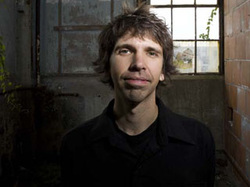 Tom Hart, cartoonist, educator
Tom Hart, cartoonist, educator
2015 Projects: Rosalie Lightning, due hopefully in 2015, from St Martins Press
Continued running of The Sequential Artists Workshop with guest workshops in 2015 by Ed Piskor (Hip Hop Family Tree) and Aidan Koch (q, The Blonde Woman, etc.)
What was the biggest story in comics in 2014? Oversized archive books
What will be the biggest story in comics in 2015? The decline of ink as medium of choice
What guilty pleasure (of any kind) are you looking forward to in 2015? Reading Amanda Palmer’s book, the Art of Asking. That probably doesn’t count, does it?
 Adam Koford, writer/cartoonist
Adam Koford, writer/cartoonist
2015 Projects: I just hit #2600 with the Laugh-Out-Loud Cats at HOBOTOPIA.com with no end in sight (though I am sending them underground for a while), and I wrote the Spider-Man Play Set for Disney Infinity 2.0.
What was the biggest story in comics in 2014? The success of the Guardians of the Galaxy film and the subsequent ubiquitousness of Rocket and Groot.
What will be the biggest story in comics in 2015? DC’s move west will be fun to watch.
What guilty pleasure (of any kind) are you looking forward to in 2015? My kids have got me hooked on HeroClix, so I’m a little too excited for the upcoming Spider-Man Symbiotes figures.
 Alex Segura, writer/editor
Alex Segura, writer/editor
2015 Projects: Writer of crime novels and comics, Archie Comics PR guy and Editor of Dark Circle Comics
What was the biggest story in comics in 2014? Comics are everywhere. It isn’t just movies – but TV, video games and more. Selfishly, I also felt like the ARCHIE #1 news caught a lot of people by surprise. I also feel like Image continues to defy preconceptions about what a “big publisher” is in comics, dovetailing nicely with what cable TV seems to be doing.
What will be the biggest story in comics in 2015? For me, it’s the launch of Archie’s superhero imprint, Dark Circle Comics with THE BLACK HOOD, THE FOX and THE SHIELD. Overall, I think it’ll be a continuation of what we’ve seen over the last few years – creators getting to tell their own, personal stories/creating their own characters as their livelihoods, as opposed to something done between work-for-hire gigs. I think you’ll also see that influencing how IP-owning companies approach their own characters and promote them. Los Bros Hernandez
What guilty pleasure (of any kind) are you looking forward to in 2015? I don’t believe in guilty pleasure – but I’m always happy when there’s more Achewood!
Blog: PW -The Beat (Login to Add to MyJacketFlap)
JacketFlap tags: the graveyard book, p craig russell, R. Crumb, Scott Hampton, Thought Bubble, Michael Lark, Leeds Comic Art Festival, Nightworld, Paolo Leandri, Richard Starkings, Santi Arcas, Tim Sale, Dark Horse, Jungle Book, Dean Haspiel, Kevin Nowlan, Jill Thompson, andre the giant, Harvey Kurtzman, Image Comics, greg rucka, Top News, Box Brown, Adam McGovern, Dominic Regan, Emma Rios, Andrea Tsurumi, alison sampson, Comic Arts Brooklyn, james romberger, Ales Kot, Alexander Rothman, fear my dear, Galen Showman, Hwei Lin, Inkbrink, Kitchen Sink, Neil Gaiman, Add a tag
While we were enjoying Comic Arts Brooklyn this year, my partner Marguerite Van Cook and I took a break from the excitement of promoting our new Fantagraphics Book The Late Child and Other Animals to go across the street to a little coffee bar and have a snack. The young counterperson noted the influx of odd personages hauling portfolios and piles of comics and asked, “is that a convention?”
I replied, “Well, a convention is more like one of those huge things with wrestlers, porn stars and superhero comics, all mixed together with a lot of cosplayers. This is more of a gathering of especially individualistic birds in the alt/lit comics scene. I guess you could call it a ‘murder’ of cartoonists.”
She laughed and asked about the origin of that phrase, which usually describes a flock of crows. But not to further elaborate that conversation, what follows is a review sampling of comics, many of them with poetical aspects, that I got at CAB and other recent releases. Note that I don’t actually try to kill my subjects, but rather to remark on their positive aspects, wherever possible.
____________________________________________________________
Jungle Book by Harvey Kurtzman (Kitchen Sink/Dark Horse, $24.99)
A rare solo effort by the auteuristic creator of E.C.’s two excellent war comics titles Two-Fisted Tales and Frontline Combat, working in the satiric mode he initiated for Mad. Now, I do very much like Kurtzman’s solo work; see Fantagraphics’ recent collection of most of his solo E.C. stories, Corpse on the Imjin (which also contains a smattering of his odd, briefer collaborations, like those with Alex Toth and Joe Kubert). His own drawings have a powerful thrust and direct emotionality that can be lost or greatly altered when filtered through the sensibilities of the artists charged to re-illustrate his layouts. In Jungle Book, which was originally released by Ballantine Books in 1959 as a dingy, downscale paperback, Kurtzman’s targets include a jazz/noir mashup, a TV western and most impressively, in “The Organization Man in the Grey Flannel Executive Suite”, a cutting sendup of the fierce sexism that polluted the offices of his former employer, ex-Marvel Comics owner Martin Goodman. This brilliant strip is nonetheless disparaged as “weak” by famed misogynist and Kurtzman discovery R. Crumb, in the afterthought conversation between the underground artist and Peter Poplaski that cabooses this otherwise beautifully-produced hardcover reprint volume.
____________________________________________________________
Andre the Giant: Life and Legend by Box Brown (First Second, $7.99)
Brown’s biography of wrestling star Andre Roussimoff joins a small group of comics masterpieces that deal with this most theatrical of sports, from Jaime Hernandez’s Whoa Nellie from 2000 to a series of tongue-in-cheek horror collaborations by Mike Mignola and Richard Corben in more recent years, including their 2011 graphic novella House of the Living Dead. Brown’s is a remarkably consistent effort with effective graphic sequences such as the one pictured above and I also admire his restrained handling of the heavily staged fight scenes, as well as his unusual architectural establishing shots. Brown’s stark, spare and precise cartooning create a unique mood, as they contextualize Andre’s success with a tragic acknowledgement of the unrelenting sense of otherness and diminished opportunities for social interaction that he experiences due to his exceedingly unusual scale; as well as his size’s harsh repercussions on his health.
__________________________________________________________
Fear My Dear: A Billy Dogma Experience by Dean Haspiel (Z2 Comics, $19.95)
The pair of poetic graphic stories in Fear, My Dear reflect Dino’s unfettered physicality and passionate persona. Since winning an Emmy award for his TV collaboration with Jonathan Ames, Bored to Death and The Alcoholic, their graphic novel from Vertigo, Haspiel has if anything become bolder and more exuberant. For this nicely produced hardcover from Josh Frankel’s new Z squared imprint, the artist uses a four-panels-per-page grid format and a monochromatic color scheme (red in the first piece, yellow and orange in the second, both with an elegant use of white for emphasis) to further define the relationship between his creator-owned characters Billy Dogma and Jane Legit. Their romance haunts post-apocalyptic urban rubble and breaks through to a star-crossed dreamscape, only to end up where they knew they must: together.
____________________________________________________________
How to Pool and Other Comics by Andrea Tsurumi (self-published, not priced)
Marguerite and I used to bask our way through the East Village dog days at the Pit Street Pool, and more recently as guests of the Miami Book Fair, we whiled away every spare moment by the steamy roof pool at our hotel. So, I can totally relate to the lead piece in Tsurumi’s new minicomic, wherein the artist collects a variety of witty graphic vignettes about group soakings in fluoridated waters, among other delicately drawn ironies and anthropomorphisms.
____________________________________________________________
Inkbrick #1 by Rothman, Sullivan, Kearney, Tunis, et al (Inkbrick, not priced)
This pocket-sized anthology of comics that incorporate, or are adapted from, poetry is made up of remarkable short stories done in a variety of mediums that range from full color to black & white. Immediate standouts for me are Paul K. Tunis’s watery montages for “Avenge Me, Eavesdropper,” Gary Sullivan’s oblique ink rendering of horrific Asian mythologies, “Black Magic”; Simone Kearney’s whimsically etched “Mobilization”; and editor Alexander Rothman’s “Keeping Time” (pictured above), a piece apparently finished in colored pencils that inventively expresses non-visual sensory impressions such as sound, smell and touch.
____________________________________________________________
The Graveyard Book, Volumes 1 and 2 by Neil Gaiman, P. Craig Russell et al (Harper Collins, $19.99 each)
Although The Graveyard Book continues Neil Gaiman’s anti-collaborative self-hype at the expense of his artist partners, I do appreciate P. Craig Russell’s adaptations of Gaiman’s stories into comics form. Russell’s elegant cartooning and storytelling are paced far better than if Gaiman had scripted; it worked beautifully for Murder Mysteries, Coraline and The Dream Hunters. Now, for Gaiman’s morbidly charming tale of a live boy shielded from a cabal of serial killers by the shades of the deceased occupants of a cemetery and raised by them to young adulthood, Russell acts artistically in a way similar to Kurtzman’s E.C. methodology: he adapts the text and does layouts; the finishing artists serve as illustrators. This makes for a surprisingly smooth and consistent read. I particularly admire the polished renderings of Kevin Nowlan (seen above), Scott Hampton, Jill Thompson and the Russell-miming Galen Showman; and although a somewhat discordant note is sounded by the grotesqueries of Tony Harris, the whole is unified by colorist Lovern Kindzierski and illuminator Rick Parker, who hand-lettered the text, for me a visual treat in these days of page-deadening digital fonts.
____________________________________________________________
Lazarus #1-9 by Greg Rucka, Michael Lark and Santi Arcas (Image Comics, $2.99 each)
I drew one of Greg Rucka’s first comics stories (“Guts” in DC/Vertigo’s Flinch #8, 2000), but it seems to me that the writer doesn’t take as much advantage as he might of the properties that are unique to comics—almost everything he does might work just as well if not better as TV shows. In his 2012 collaboration with Matthew Southworth, Stumptown, it is Southworth’s expressive drawing that provides most of the interest and its most effective use of the medium is that the artist rendered Vol 2, #4 with a Toth-esque sideways, widescreen layout. For Lazarus, a story of a female assassin in a dystopian, nearly medieval America run by a select group of powerful families that is absorbing enough and has had some striking moments, but still often has a feeling of deja vu about it, a lot of the heavy lifting is provided by artist Michael Lark’s cinematic near-photorealism, accomplished in collaboration with Santi Arcas’ hi-tech color graphics.
____________________________________________________________
Thought Bubble #4 by Kot & Sampson, Lim & Rios, Starkings & Sale et al (Image Comics, $3.99)
This color tabloid is a showcase for the participants in the UK’s Leeds Comic Art Festival. My favorite piece is a sort of gentle advisory poem that in its course expresses a goal that many sensitive artists hold dear: that of “making things that help other people feel less alone.” It is the work of the writer of Image’s fascinating rotating-artist series Zero, Ales Kot, expressively drawn with upended, widescreen and oblique imagery by Alison Sampson, who just won a British Comic Award for emerging talent; and nicely colored by Jason Wordie. Also notable: a beautiful page by Hwei Lin and Emma Rios; and an Elephantmen strip written by Richard Starkings and elegantly rendered in ink washes by Tim Sale.
____________________________________________________________
Nightworld #s 1-4 by Adam McGovern, Paolo Leandri & Dominic Regan (Image Comics $3.99 each)
A tale of questing, embattled superhero-ish spirits, Nightworld manages to not only convey an approximation of the look of a Jack Kirby comic book, but it also comes closer than anything else I have seen to capturing something of the spirit of that master’s fierce and restless creativity. Artist Leandri hits a spot somewhere between majoring in Kirby, minoring in Steranko and echoing the early work of Barry Smith, back in the day when he was emulating Jack. Leandri’s spreads can look remarkably as if they were actually drawn by Kirby and his character designs and action passages likewise (see example above), without ever feeling as appropriated, or as forced, as those by some other artists who attempt to adhere as closely to the same model. These comics are colored by Regan with an oddly chosen palette that, again, is reminiscent of Kirby’s psychedelic experiments with Dr. Martin’s dyes. Moreover and significantly, writer McGovern’s poetic voice uniquely grasps a sort of post-traumatized and humane melancholy of narrative, the most tragic scenes of which are appropriately followed and leavened in a Shakespearean mode by bursts of frenetic humor, that can be seen in Kirby’s best writing.
____________________________________________________________
Blog: PW -The Beat (Login to Add to MyJacketFlap)
JacketFlap tags: Fantagraphics, Mini Comics, Lucy Knisley, Top News, hans rickheit, CAFs, CAB 2014, dylanhorrocks, frank stack, james romberger, marguerite van cook, massive gay manga, Olivier Schrauwen, the complete zap, wilfred santiago, Add a tag
And that just about wraps it up here! With new books by Horrocks, Rickheit, Schrauwen, Knisley, James Romberger and Marguerite van Cook, and a little item called The Complete ZAP! I think Fanta is kinda….ruling. Get these REALY kids because they will go FAST FAST FAST.
Arsene Schrauwen by Olivier Schrauwen
Follow along as Olivier’s grandfather traveled to a remote colony to help build a utopia in the wilderness, fell in love with his cousin’s wife, and then into delirium – but is it love or jungle virus-induced fever, reality or imagination? You’ll come undone by Olivier’s first full-length graphic novel: part-biography, part-surrealscape, all fantastic. $34.99 Out in November 2014 but get your copied SIGNED by Olivier at CAB.
Cochlea & Eustachia by Hans Rickheit
Cochlea & Eustachia appear to be twin human girls, but this has yet to be confirmed. Their actions seem to be motivated less by curiosity than boredom and an inclination towards purposeless destruction. This new graphic novel from the author of the acclaimed Squirrel Machine is lighter in tone than his previous works, yet its myriad charms remain as sinister as Rickheit fans would expect. $19.99 Out in stores December but pick up an advance at the Fantagraphics table at CAB.
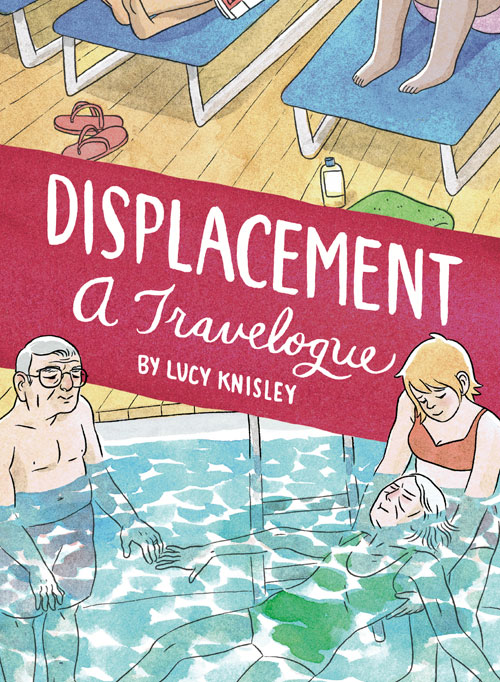
Displacement by Lucy Knisley
A travel memoir recounting the artist’s experience of caring for her frail grandparents aboard a cruise ship, while reflecting on her own fears on mortality, her age, ageism in America and her family’s relationships and history. $19.99 In stores January 2015 but pick up an advance copy at the Fantagraphics table at CAB.
Foolbert Funnies by Frank Stack, edited by Kristy Valenti
A “best of the rest” tribute collecting Stack’s work under his pseudonym, “Foolbert Sturgeon”. Includes appearances by Dirty Diana, time traveler Frank Crankcase, Dr. Feelgood, and others. A tribute to a Texan who’s been quietly creating observational, iconoclastic art for more than forty years. $24.99 In stores January 2015 but pick up an advance copy at the Fantagraphics table at CAB.
The Complete ZAP Comix by R. Crumb, Rick Griffin, Paul Mavrides, Victor Moscoso, Spain Rodriguez, Gilbert Shelton, Robert Williams, S. Clay Wilson
The most historically and aesthetically important comics series ever, finally collected. There scarcely was an underground comics world before Robert Crumb’s classic solo first issue of Zap in 1968. By Zap #2, he had begun assembling a Seven Samurai of the best, the fiercest, and the most stylistically diversified cartoonists to come out of the countercultural kiln. It will also include the 17th unpublished issue with work by Crumb, Moscoco, Wilson, Rodriguez, Shelton, Mavrides, and Williams. We’ll have one set for you to paw over. $500.00 In stores November but pick up this ONE copy at CAB.
The Late Child and Other Animals by Marguerite Van Cook and James Romberger
A generational autobiography written by legendary punk diva and award-winning poet Van Cook, adapted by artist Romberger. The journeys and struggles over decades of this mother and daughter are linked in five episodes that veer between lyricism, wry wit, and harrowing suspense. $29.99 In stores November but pick up an advance copy and get it SIGNED at the Fantagraphics table at CAB.
Massive: Gay Erotic Manga and the Men Who Make It, various artists, edited by Anne Ishii and Graham Kohlbeins
Big, burly, lascivious, and soft around the edges: welcome to the hyper-masculine world of Japanese gay comics. The first English-language anthology of its kind: a collection of manga from the most talented and influential artists in the gei komi genre. $35.99 In stores late December but pick up this a copy at CAB and get it signed by Anne Ishii and designer Chip Kidd.

Michael Jordan: Bull on Parade by Wilfred Santiago
A thrilling, kinetic bio-epic about Michael “Air” Jordan, the greatest basketball player of all time and most influential athlete in history. This tour de force explores Jordan’s public successes and private struggles. $24.99 In stores February 2015 but pick up an advance copy at the Fantagraphics table at CAB.

Sam Zabel and the Magic Pen by Dylan Horrocks
www.fantagraphics.com/samzabel
A creatively blocked cartoonist finds a mysterious old comic book and is thrown into a fantastic journey through centuries of comics, stories, and imaginary worlds. Funny, erotic, and thoughtful, Sam Zabel and the Magic Pen explores the pleasures, dangers, and moral consequences of fantasy. Horrocks’s first new graphic novel since Hicksville. $29.99 In stores late December but pick up an advance copy at the Fantagraphics table at CAB.
Treasury of Mini-Comics Vol. 2 edited by Michael Dowers
www.fantagraphics.com/treasuryofminicomics2
Four decades of deliberate DIY cartoon rebellion! Collecting some of the best mini comics ever produced by some of the most creative artists in the world. Edited by Michael Dowers. $29.99 In stores January 2015 but pick up an advance copy at the Fantagraphics table at CAB.




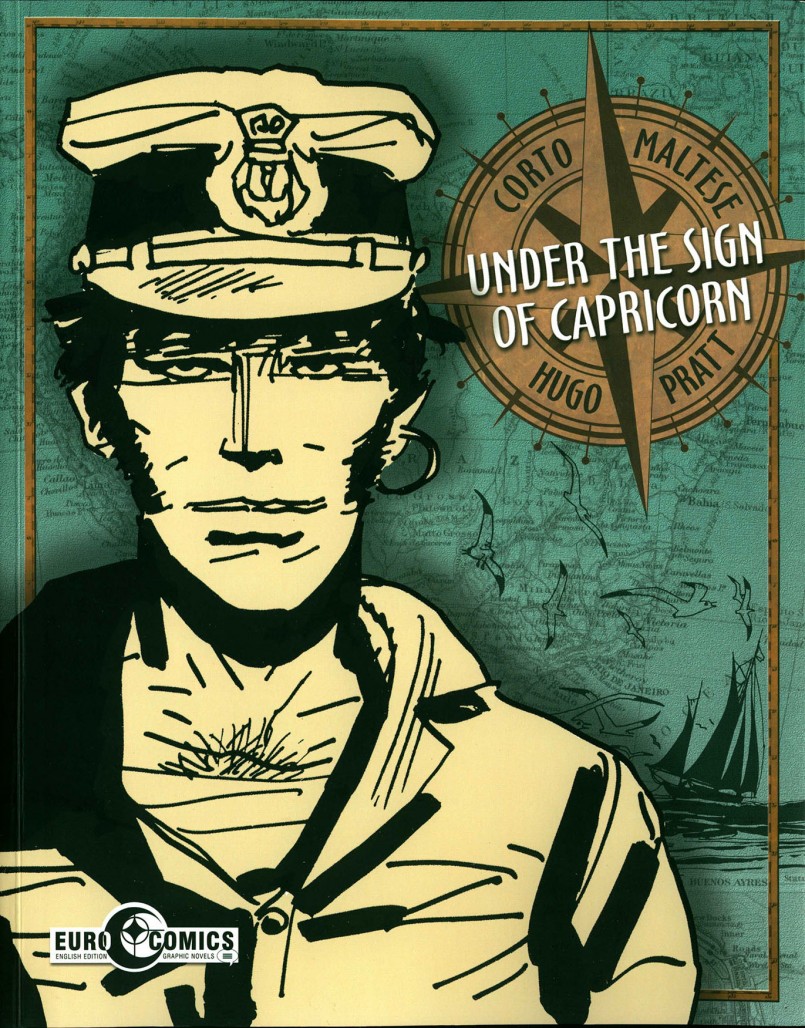
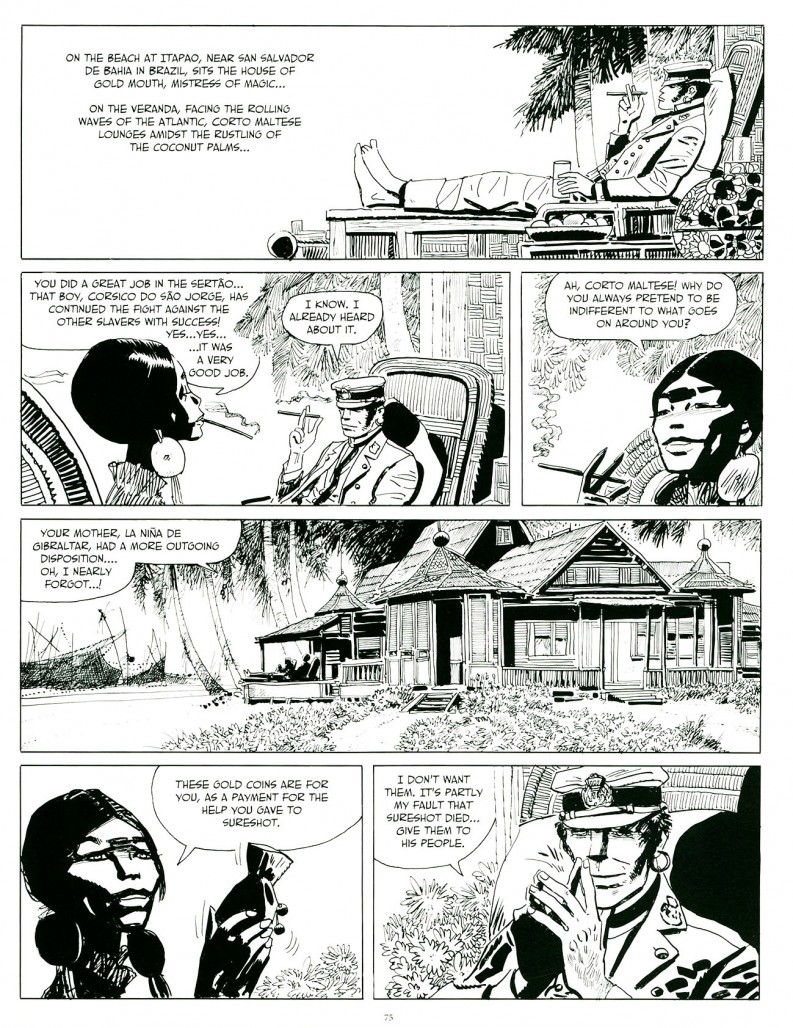
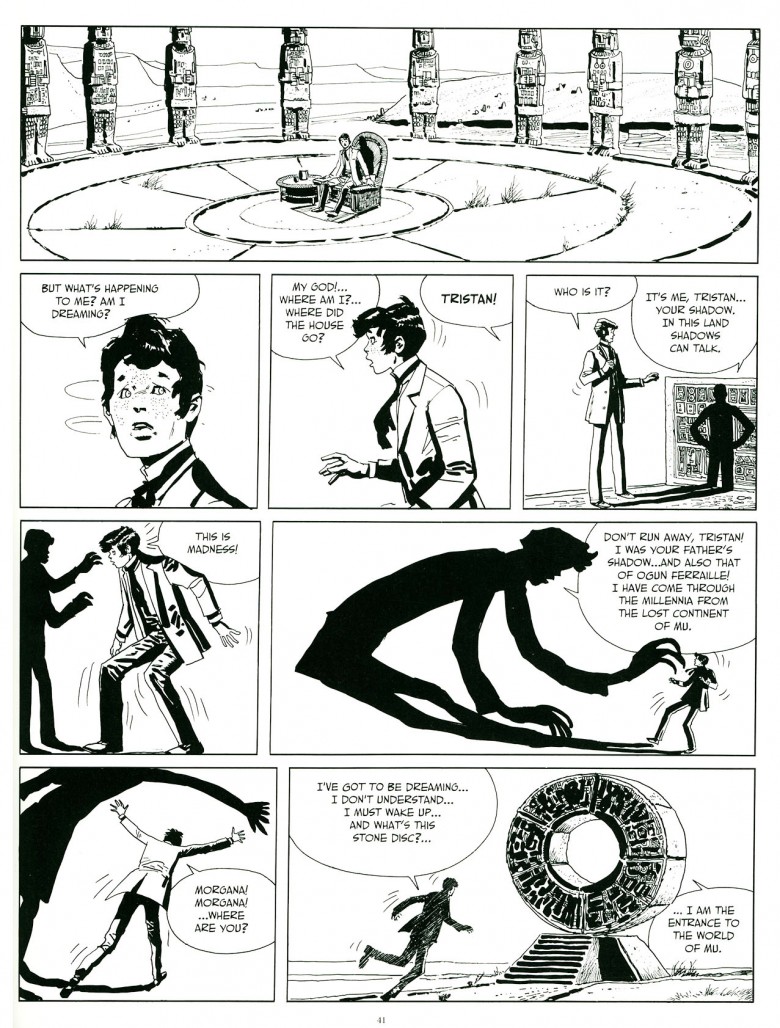
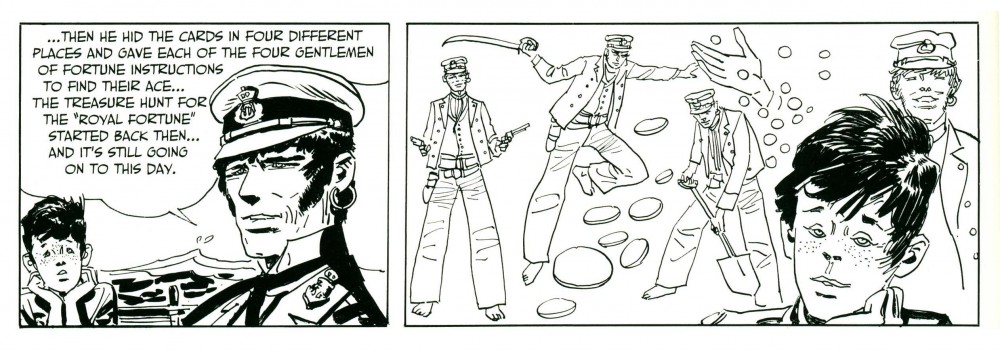

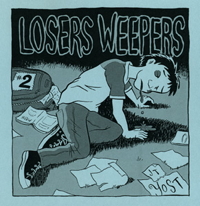
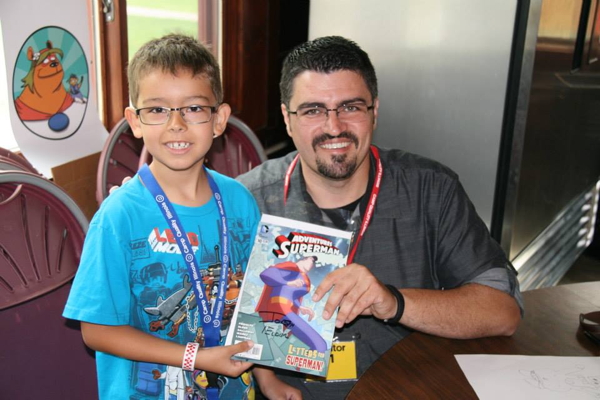
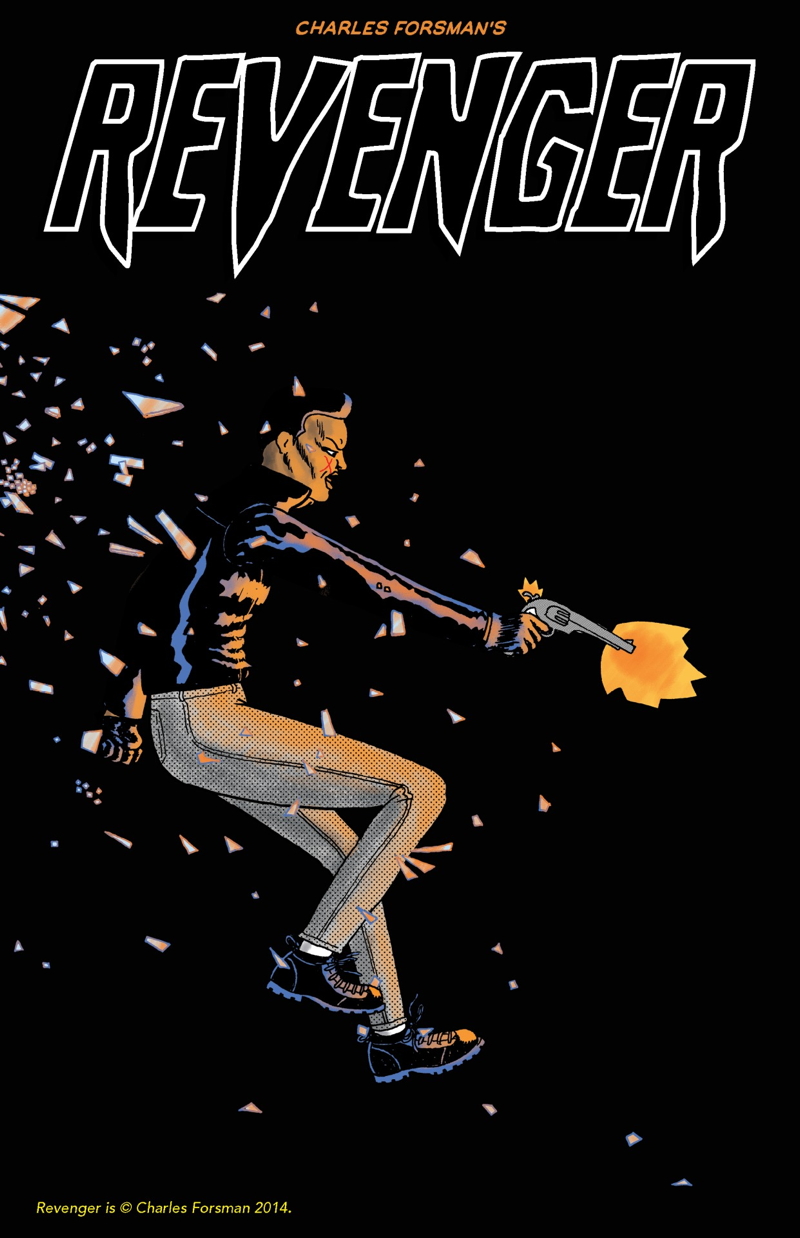

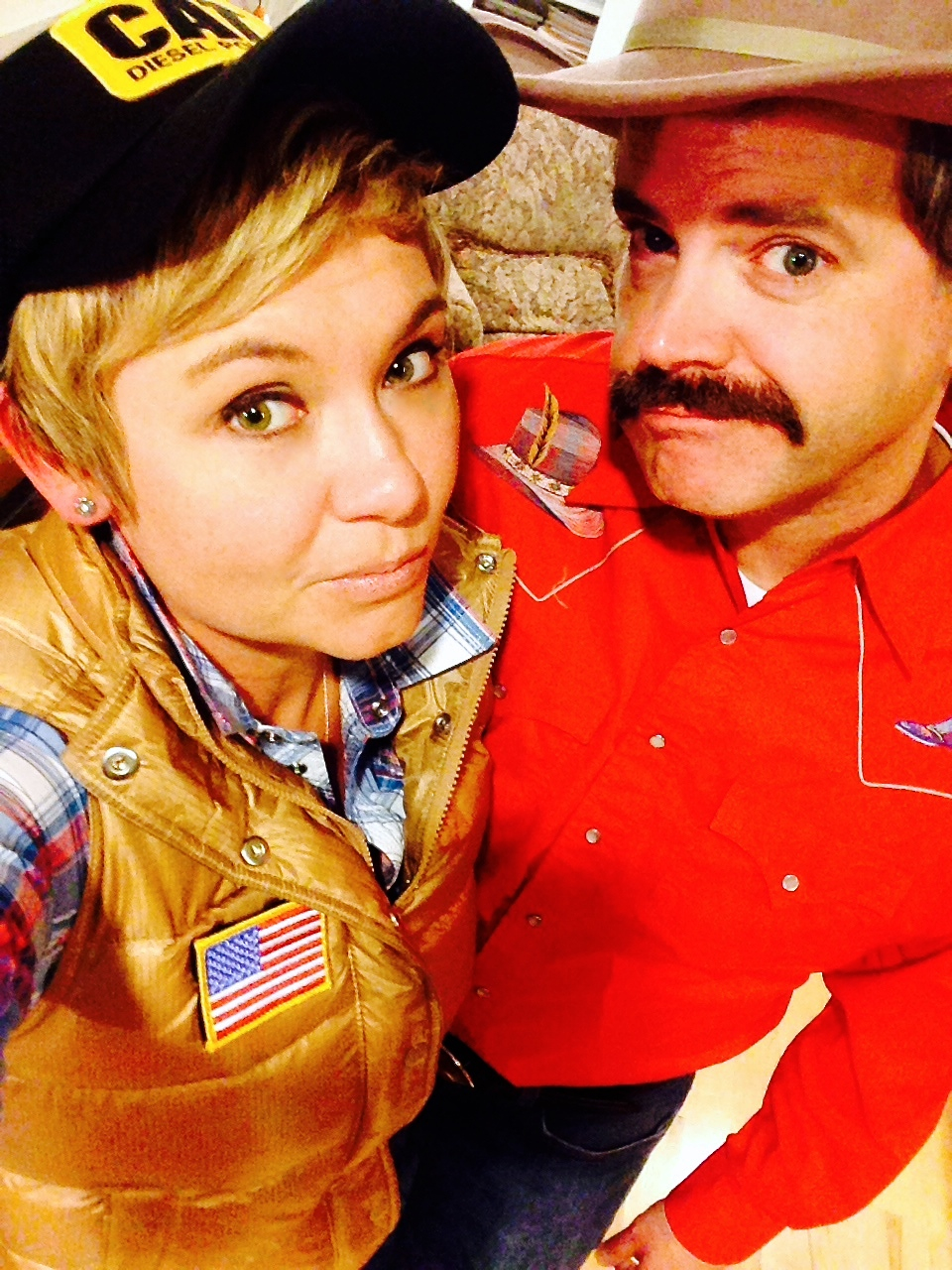

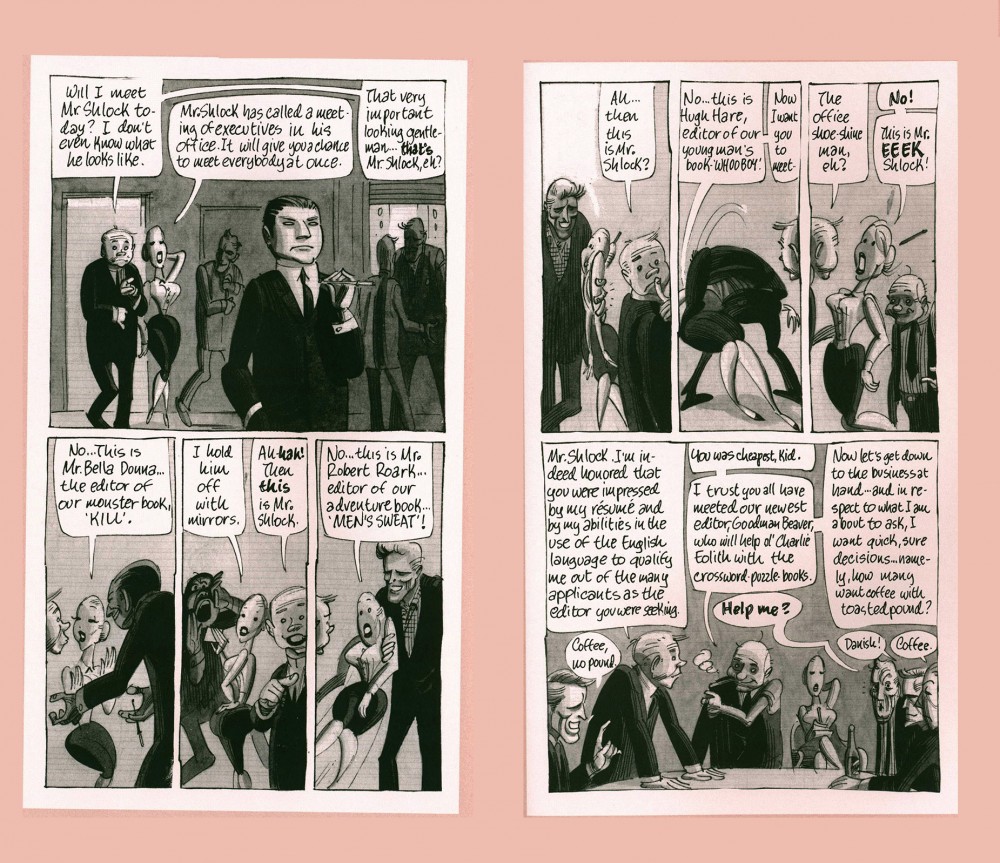
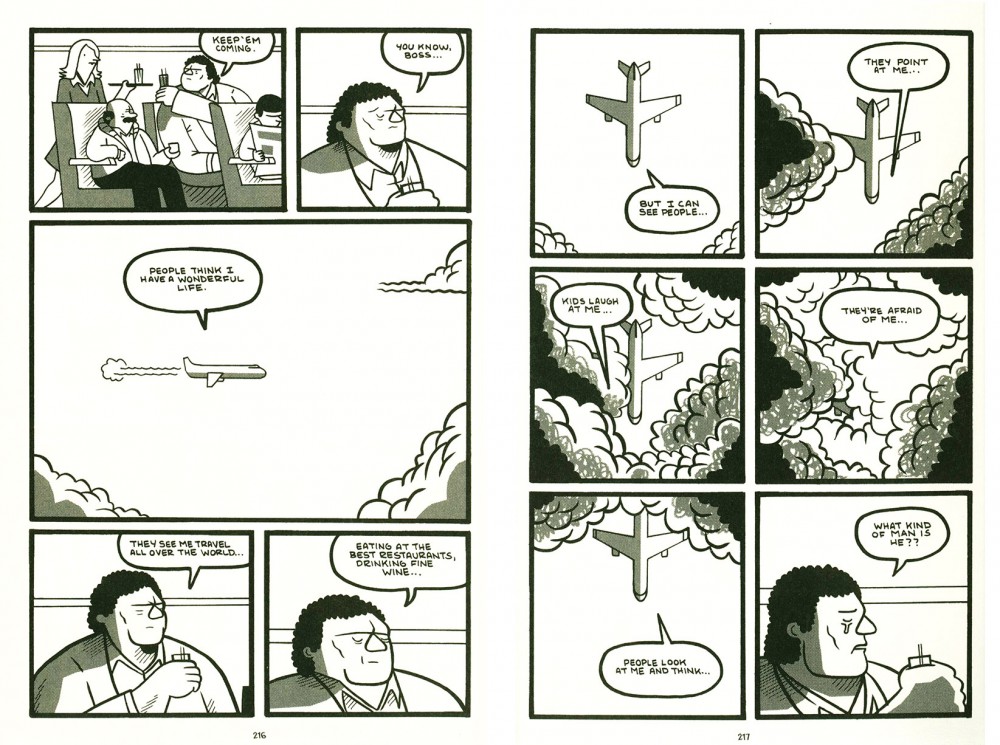
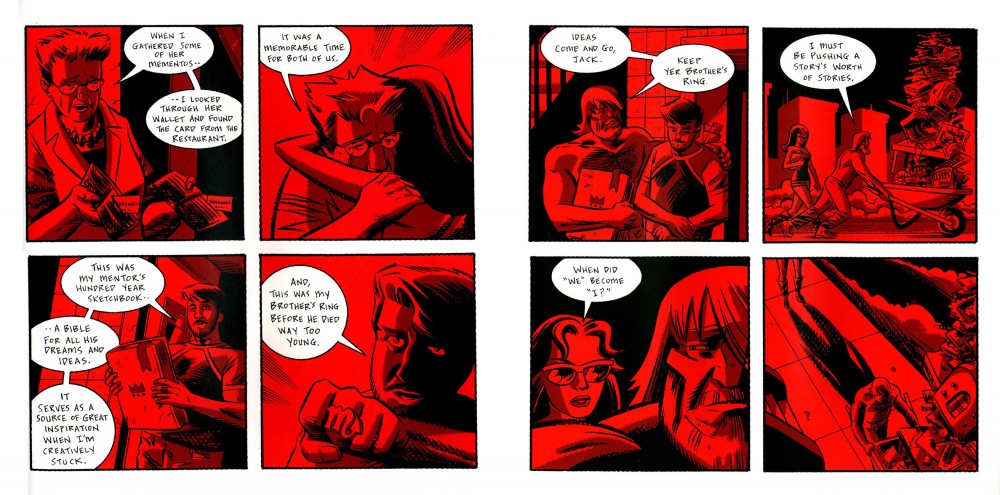
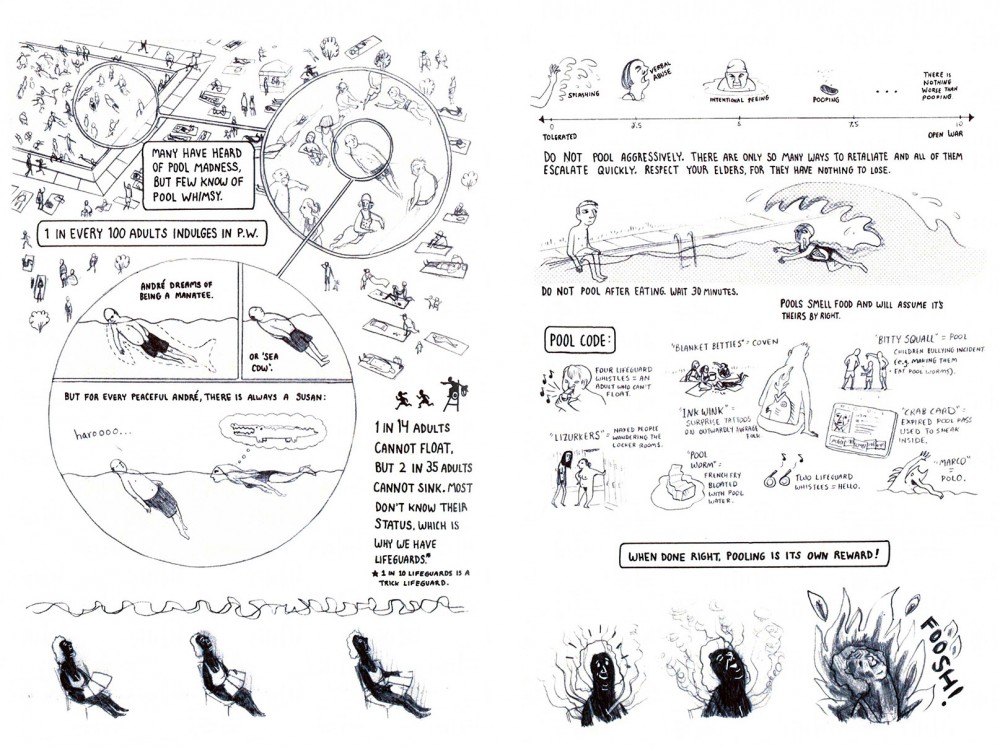





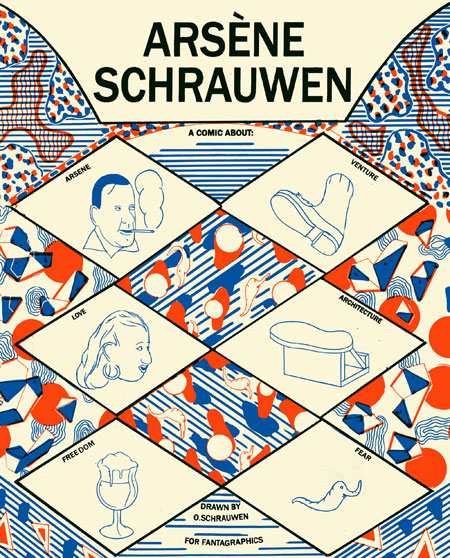




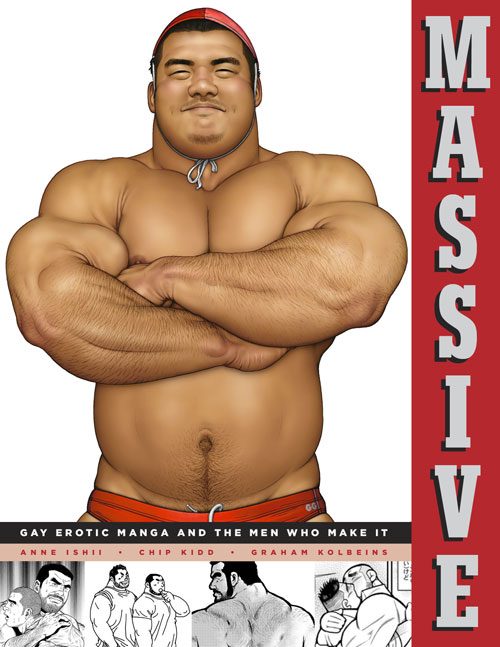
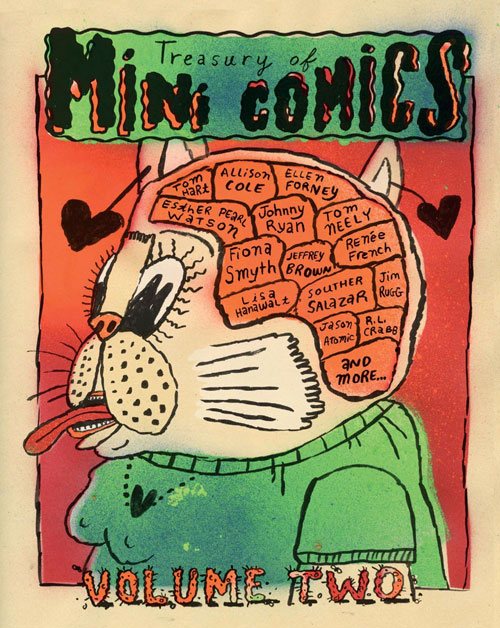
This sounds brilliant. IDW has been knocking these editions out of the park.
This is very cool, can’t wait to get hands on a copy, I love it when people take risks like this. Great long form piece by the way.
I read and loved IDW’s Corto Maltese. I’ll be getting all of them. There’s a particularly great moment when the orphan English boy meets his half sister.
I too read and loved IDW’s Corto Maltese. I was able to borrow a copy from the local library and mine is on order and in the mail as I write this note. I will read it again when it comes. Simply marvelous storytelling.
I too read IDW’s Corto Maltese. I was able to borrow a copy from the local library and mine is on order and in the mail as I write this note. I will read it again when it comes. Simply marvelous storytelling.
I’m almost jealous of you guys, you are in for a fantastic experience!